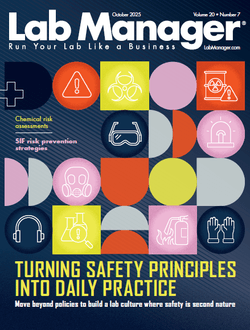Laboratory fire safety is critical to ensure the safety of personnel, minimize property damage, and prevent disruptions in research activities. Laboratories often contain flammable chemicals, high-powered equipment, and a complex web of electrical devices, all of which present significant fire risks. Understanding how to mitigate these risks and respond appropriately in case of an emergency can make the difference between a minor incident and a major disaster.
This comprehensive guide will provide best practices for preventing fires, addressing fire hazards, and establishing effective emergency procedures to create a safe laboratory environment.
Common Fire Hazards in Laboratories
Fire hazards are prevalent in laboratories due to the wide variety of chemicals, materials, and equipment used in day-to-day operations. Some of the most common fire hazards include:
Flammable Chemicals: Many solvents, such as ethanol, acetone, and methanol, are highly flammable. Incorrect storage or mishandling of these chemicals can easily lead to fire.
Electrical Equipment: Laboratories are equipped with various electrical devices, such as centrifuges, incubators, and ovens. Faulty wiring, overloaded circuits, and poorly maintained equipment can result in electrical fires.
Open Flames: Bunsen burners and other heating devices are frequently used in labs. Open flames can easily ignite flammable materials if proper safety measures are not followed.
Compressed Gases: Cylinders containing compressed gases, such as hydrogen or acetylene, can pose a significant fire risk if they leak or are not stored properly.
Reactive Chemicals: Some chemicals, such as sodium or potassium, can react violently with water or other substances, leading to fires or explosions.
Fire Prevention Measures
Preventing fires in laboratories begins with identifying and minimizing the risks associated with these hazards. Here are some essential fire prevention measures to implement:
Proper Chemical Storage: Store flammable chemicals in designated, approved flammable storage cabinets. Ensure incompatible chemicals are stored separately to prevent reactions that could lead to a fire.
Maintain Electrical Safety: Regularly inspect electrical equipment for signs of wear or damage. Avoid overloading power outlets and ensure that all electrical devices are properly grounded.
Use of Fume Hoods: When working with flammable or volatile chemicals, use a fume hood to contain vapors and minimize the risk of ignition. Ensure the fume hood is functioning correctly and has proper ventilation.
Minimize Use of Open Flames: Use open flames, such as Bunsen burners, only when absolutely necessary. Always keep flammable materials away from open flames, and never leave an open flame unattended.
Label and Store Compressed Gas Cylinders Properly: Keep gas cylinders upright and secured to prevent them from falling. Store cylinders away from heat sources, and clearly label each cylinder with its contents.
Implement Good Housekeeping Practices: Keep work areas clean and free of clutter, as accumulated materials can act as fuel in the event of a fire. Dispose of waste promptly and store only the necessary amount of chemicals in the workspace.
Fire Safety Equipment in Laboratories
Having the right fire safety equipment is essential to responding effectively to fire emergencies. Key fire safety equipment includes:
Fire Extinguishers: Laboratories should be equipped with appropriate fire extinguishers, such as Class B extinguishers for flammable liquids and Class C extinguishers for electrical fires. Ensure all personnel are trained in the correct use of fire extinguishers.
Fire Blankets: Fire blankets can be used to smother small fires or to wrap around a person whose clothing has caught fire.
Emergency Showers and Eyewash Stations: In case of exposure to flames or hazardous chemicals, emergency showers and eyewash stations should be easily accessible.
Fire Alarms and Sprinkler Systems: Ensure that fire alarms are operational and can be easily activated in an emergency. Sprinkler systems should be inspected regularly to ensure they are in working order.
Emergency Protocols for Fire Incidents
Being prepared for a fire emergency is just as important as taking preventive measures. Establish clear emergency protocols and ensure all personnel are familiar with them:
Know the Evacuation Plan: Laboratories should have a well-defined evacuation plan that includes clearly marked exits, assembly points, and escape routes. Conduct regular fire drills to ensure everyone knows what to do in case of a fire.
Activate the Fire Alarm: If a fire occurs, immediately activate the nearest fire alarm to alert others in the building. This will also notify emergency responders.
Use Fire Extinguishers When Safe: Only attempt to use a fire extinguisher if the fire is small and you have been trained to do so. Never put yourself at risk if the fire is spreading or too large to control.
Evacuate Immediately: If the fire cannot be contained, evacuate the building immediately. Close doors behind you to help contain the fire and prevent it from spreading.
Provide Assistance: Help others evacuate if it is safe to do so, particularly individuals with disabilities or those unfamiliar with the evacuation procedure.
Best Practices for Laboratory Fire Safety Training
Training is a crucial component of laboratory fire safety. All personnel, including students and new employees, should receive fire safety training. Key elements of fire safety training include:
Understanding Fire Classes: Educate personnel on different classes of fires (Class A, B, C, D, and K) and the appropriate extinguishing methods for each.
Hands-On Fire Extinguisher Training: Provide hands-on training in the use of fire extinguishers so that personnel feel confident in their ability to respond to small fires.
Emergency Response Procedures: Regularly review emergency response procedures, including how to activate fire alarms, evacuate the building, and use safety equipment.
Chemical Safety Training: Ensure that personnel are aware of the hazards associated with the chemicals they are using, including flammability and reactivity risks.
Conclusion
Laboratory fire safety is essential for protecting lives, preserving research, and minimizing property damage. By understanding common fire hazards, implementing effective prevention measures, and being prepared for emergencies, laboratory personnel can create a safer working environment. Regular fire safety training, proper storage of flammable materials, and adherence to safety protocols all contribute to reducing fire risks and ensuring that everyone in the lab is well-prepared to handle fire incidents effectively.
Creating a culture of safety in the laboratory requires continuous effort, but it is an investment that pays off in the form of safer workspaces and more successful research outcomes. To learn more, the Lab Safety Management Certificate provides the necessary knowledge, skills, and advice needed to manage the safety of your lab.
Laboratory fire safety is critical to ensure the safety of personnel, minimize property damage, and prevent disruptions in research activities. Laboratories often contain flammable chemicals, high-powered equipment, and a complex web of electrical devices, all of which present significant fire risks. Understanding how to mitigate these risks and respond appropriately in case of an emergency can make the difference between a minor incident and a major disaster.
This comprehensive guide will provide best practices for preventing fires, addressing fire hazards, and establishing effective emergency procedures to create a safe laboratory environment.
Common Fire Hazards in Laboratories
Fire hazards are prevalent in laboratories due to the wide variety of chemicals, materials, and equipment used in day-to-day operations. Some of the most common fire hazards include:
To continue reading this article, sign up for FREE to

Membership is FREE and provides you with instant access to eNewsletters, digital publications, article archives, and more.












